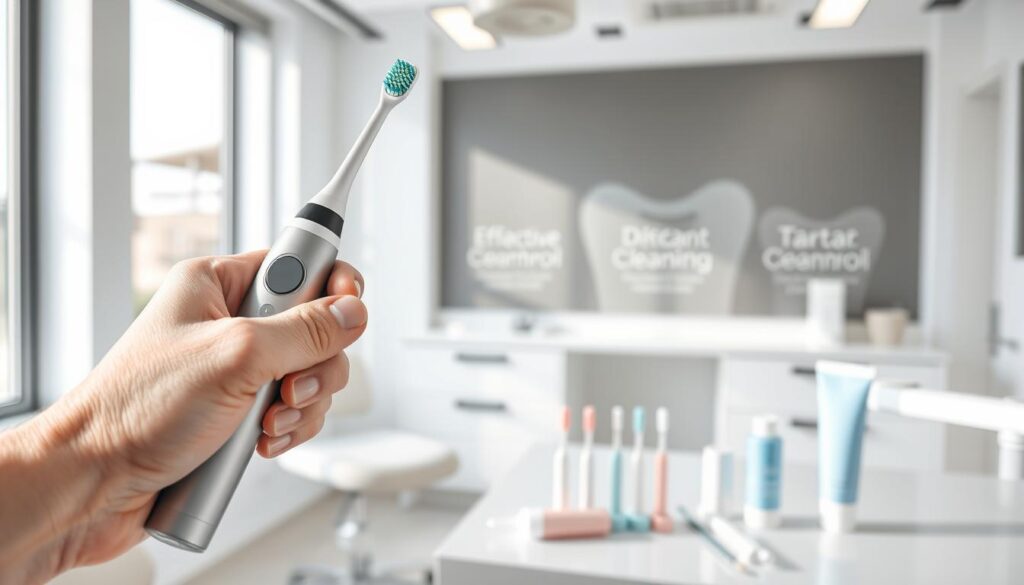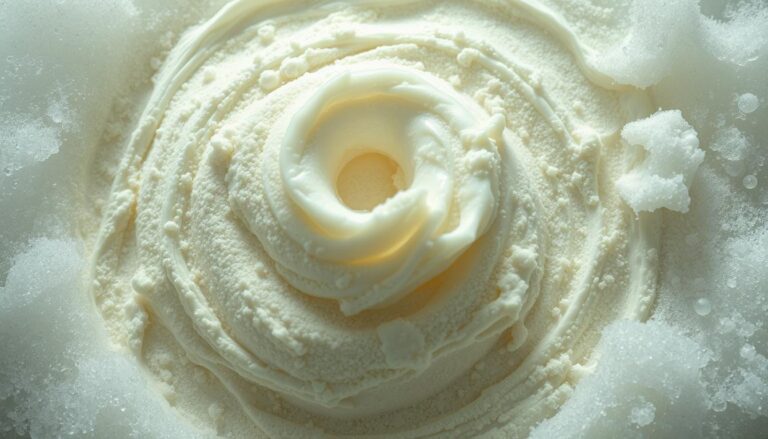What is Plaque and Tartar, and How Do They Affect My Teeth?

Did you know 68% of adults have tartar build-up, even with good dental habits? It often stays hidden until a dentist spots it. So, what are plaque and tartar? And why worry about them?
It’s important to understand plaque and tartar. Plaque is a clear, sticky film of bacteria on our teeth. Without cleaning, it becomes tartar. Tartar sticks to teeth enamel and causes many dental problems. You can’t just brush or floss tartar away. Removing it needs a dentist or hygienist’s help.
Don’t ignore plaque and tartar for good oral health. Plaque happens normally, but tartar means you need better dental care. Seeing a dentist regularly is crucial. They can spot and remove tartar before it causes cavities or gum disease.
Key Takeaways
- Understanding what is plaque and tartar is vital for oral health.
- Diligent dental hygiene plaque and tartar control reduces the risk of oral health issues.
- Tartar formation requires professional plaque and tartar removal.
- A regular dental check-up can help manage tartar before it leads to cavities or gum disease.
- Adopting a proactive approach to dental care is key to long-term oral hygiene.
Understanding the Basics of Plaque
Starting with a strong grasp of plaque is key to great oral health. Plaque’s role in dental hygiene is huge, needing full understanding. Let’s dive into plaque and tartar definition, what they’re made of, and how they form on teeth.
Definition of Plaque
Plaque is a sticky film on teeth and gums, mostly bacteria. It’s first talked about with plaque and tartar definition. It’s soft and hard to see, forming when bacteria, proteins, and food mix. Keeping it away is key for oral health, as found on this resource.
Composition of Plaque
Plaque mainly consists of bacteria, mixed with saliva and food bits. This mix forms a sticky film. This film helps bacteria grow, which shows why cleaning your teeth well is so important. Not cleaning it off can lead to bigger mouth problems.
How Plaque Forms on Teeth
Plaque starts forming right after you eat or drink something with sugar or starch. It sticks to teeth and gum lines, growing in places hard to clean. That’s why getting professional cleanings is vital to remove plaque where a toothbrush can’t reach.
The Differences Between Plaque and Tartar
It’s important to know the difference between dental plaque and tartar for good oral health. We will look at their unique traits and how they interact to impact dental cleanliness.
Key Characteristics of Tartar
Tartar, or calculus, is plaque that has hardened on your teeth and along your gums. It’s crusty and hard, unlike the soft, sticky plaque, and only a dentist can remove it. Its rough surface makes it easy for more plaque and tartar to form.
Formation Process of Tartar
Plaque forms from bacteria, food bits, and saliva. If not brushed and flossed away, it combines with minerals in saliva. This process, called mineralization, turns it into the hard, rough tartar.
How Tartar Relates to Plaque
Plaque turns into tartar if left on teeth too long. Stopping plaque from becoming tartar is crucial to avoid big dental treatments. Good oral hygiene is key.
Knowing the difference between plaque and tartar matters for your teeth’s health. You can stop plaque from turning into tartar with good care. This means regular dentist visits and daily teeth cleaning.
The Impact of Plaque on Oral Health
Plaque and tartar significantly harm oral health. This sticky bacteria film coats your teeth and gums, causing problems. It’s key to understand how plaque affects your mouth for good tartar control. Check out the relationship between plaque and oral health for better care.
Connection to Cavities
Plaque directly leads to cavities, causing big trouble. The bacteria in plaque turn sugar into acid, attacking our teeth. This acid eats away enamel and causes cavities. Continual acid attacks lead to weaker enamel and more decay.
Role in Gum Disease
Gum disease starts with simple gingivitis but can get worse without care. Plaque bacteria make nasty toxins, hurting and swelling your gums. By tackling plaque, we can fight gum disease. This highlights why we must visit the dentist regularly and keep up with oral hygiene.
Influence on Bad Breath
Plaque is a major bad breath culprit, too. It doesn’t just hurt teeth and gums; it makes your breath smell bad. Getting rid of plaque regularly is crucial for fresh breath and staying healthy.
Fighting plaque’s harmful effects needs both dentist visits and good daily care. This approach keeps plaque at bay, reducing oral health risks. It’s all about staying ahead and preventing problems.
The Dangers of Tartar Buildup
Tartar, a hardened form of plaque, is bad for your mouth. It speeds up tooth decay and leads to gum disease. Knowing how to stop plaque and tartar from building up is key.
Plaque and tartar removal is key for a healthy mouth. Tartar makes it easy for more plaque to stick. This bad cycle harms your teeth and gums. It can cause bigger health problems too.
Tartar at the gumline helps decay happen faster. It gives bacteria a place to stick. This speeds up enamel erosion, which can lead to cavities.
Tartar can make your gums inflamed. This is the start of gum disease. Without good plaque and tartar removal, gum disease can get worse. It might cause tooth loss or other health issues.
Good oral health is tied to your overall health. Problems like gum disease can link to diabetes and heart disease. So, keeping your mouth clean isn’t just for looks. It’s crucial for your health. Regular dentist visits and taking care of your teeth at home help stop plaque and tartar.
Signs of Plaque Accumulation
Knowing the early signs of plaque buildup is key for good dental hygiene. If not taken care of quickly, plaque and tartar can cause major tooth problems. It’s very important to know how plaque and tartar affect your teeth and to act fast if you see these signs.
Visual Indicators: The first sign of plaque is often a pale yellow layer on your teeth. This sticky film is where bacteria live and can turn into tartar if you don’t brush and floss well.
Sensitivity and Discomfort: If your teeth start to feel more sensitive to hot, cold, or sweet things, it may mean you have plaque buildup. Plaque can wear away your enamel and reveal the sensitive part of your teeth below.
Bad Breath Signals: Bad breath that doesn’t go away can be a sign that plaque is present. The bacteria in plaque produce smells that can make your breath not smell good. This shows that plaque and tartar are not being properly managed.
- Regular brushing and flossing to remove plaque
- Using mouthwashes specifically designed to fight plaque
- Visiting the dentist for professional cleanings biannually
Understanding and acting on these signs quickly can help avoid problems from plaque and tartar, ensuring your teeth and gums stay healthy. Regular dentist visits are very important. They can catch and fix tooth problems early on. Being aware and taking care of your teeth early is the best way to manage plaque and tartar.
Signs of Tartar Formation
Tartar doesn’t just appear; there are signs that show up first. If you spot these signs early, you can fight plaque and tartar buildup better. Knowing these signs helps keep plaque and tartar under control.
Tartar as a Stain on Teeth: A yellow or brown stain on the teeth, especially near the gums, is an early warning. This stain is more than a beauty issue; it means plaque has turned into tartar. Tartar is hard and sticks to teeth, making it tough to remove without a dentist’s help.
Gum Inflammation Symptoms: Tartar can make your gums red, swollen, and bleed when you brush or floss. This is your body fighting the bad bacteria in tartar. If ignored, this can lead to serious gum disease, like periodontitis.
Changes in Oral Hygiene Routine: More tartar might mean your usual toothbrushing isn’t enough anymore. You might find you need better tools or methods to keep your teeth clean.
Going to the dentist regularly helps catch tartar early on. Being aware and acting quickly can prevent bigger teeth problems from tartar.
How Plaque and Tartar Form
To effectively remove and prevent plaque and tartar, it’s key to understand how they form. We’ll look at how daily actions, what we eat, and our body’s natural processes play a role. This helps us tackle the problem at its root.
Daily Habits that Contribute
Plaque starts forming right after we eat foods that are sugary or starchy. If we brush and floss regularly, we can keep plaque at bay. But, if we skip these steps, plaque hardens into tartar. Tartar is tougher to get rid of and needs a dentist’s help.
That’s why consistently cleaning your teeth is critical. This stops plaque from becoming tartar.
The Role of Diet
What we eat has a big impact on our oral health. Sugary and starchy foods boost plaque. But, eating veggies and calcium-rich foods helps. They clean our teeth naturally and strengthen the enamel. This is vital in preventing plaque and tartar.
Importance of Saliva
Saliva is our mouth’s protector against plaque. It cleans away food bits and neutralizes harmful acids. Having enough saliva helps weaken plaque and repairs teeth. So, it’s crucial in preventing plaque and tartar.
| Daily Habit | Impact on Plaque and Tartar Formation |
|---|---|
| Brushing Frequency | Regular brushing reduces plaque build-up and prevents tartar formation |
| Dietary Choices | High sugar and starch intake increases risks; calcium-rich foods can protect enamel |
| Saliva Production | Adequate saliva flow helps prevent plaque from hardening into tartar |
Prevention Strategies for Plaque
Stopping plaque and tartar from forming is key to great dental health. Good plaque and tartar control stops cavities and gum disease. We’ll look at ways to keep plaque at bay and prevent it from becoming tartar.
Brushing Techniques
Using the right brushing methods is crucial for dental health. A soft-bristled toothbrush and fluoride toothpaste should be used twice daily. Brushing for two minutes covers all tooth surfaces. This removes food and plaque, which is vital in fighting plaque and tartar.
Importance of Flossing
Flossing every day is important as it gets rid of plaque where toothbrushes can’t reach. It stops plaque from turning into tartar. Flossing keeps your gums healthy and helps avoid gum disease.
Mouthwashes and Rinses
Mouthwashes with antibacterial ingredients reduce plaque. They help prevent tartar and reach spots missed by brushing and flossing.
Together, these methods offer full protection against plaque and cut down tartar risks.

| Dental Tool | Function | Frequency of Use |
|---|---|---|
| Toothbrush | Removes plaque from teeth surfaces | Twice daily |
| Dental Floss | Cleans between teeth and below gum line | Once daily |
| Mouthwash | Targets residual plaque and bacteria | Once or twice daily |
Following these brushing, flossing, and rinsing routines greatly helps prevent plaque and tartar. It leads to healthier teeth and gums.
Ways to Prevent Tartar Buildup
Good oral health is about more than brushing and flossing. For great dental hygiene, stopping tartar is key. This involves care from dentists and making smart choices in life.
Dental experts talk about plaque and tartar together. That’s because managing plaque stops tartar. Plaque is a sticky bacteria layer that forms on teeth. If it’s not cleaned off, it can harden into tartar at your enamel’s base. This can cause dental issues. Follow these three tips to keep your teeth tartar-free and reach your dental health goals.
Regular Dental Cleanings
Getting your teeth cleaned by a pro is vital to prevent tartar. Dental experts use special tools to clean off plaque and tartar you might miss at home. They suggest cleaning your teeth this way twice a year for the best dental health and to control plaque and tartar.
Use of Tartar-Control Toothpaste
Using toothpaste that fights tartar daily can really make a difference. These toothpastes have special ingredients like pyrophosphates and zinc citrate. They are shown to stop plaque from turning into tartar.
Dietary Adjustments
Eating less sugar and starch helps prevent plaque and tartar. Foods high in fiber clean your teeth naturally and make your breath fresh. A balanced diet is good for your overall and dental health.
Stick to these tips to keep your dental hygiene top-notch, fight off tartar, and boost your overall health. Stopping tartar is not just for looks. It’s crucial for keeping your teeth and gums healthy.
Professional Treatments for Plaque and Tartar
Brushing and flossing daily is good, but not enough. Professional dental care is key to keeping your mouth healthy. It fights effects of plaque and tartar well. Knowing about plaque and tartar definition and their treatments is a big help for everyone.
Dental Cleanings Explained
Getting your teeth cleaned by a dentist is essential. It removes tartar, which brushing can’t get rid of. This keeps plaque away and lowers the chances of getting gum disease and cavities.
Dental hygienists use special tools for this. They carefully remove tartar above and below your gum line. This keeps your teeth and gums in top shape.
Scaling and Root Planing
If tartar gets worse, scaling and root planing might be needed. This deep clean gets rid of tartar below your gums. It’s very important for stopping gum disease. It removes hiding spots for bad bacteria.
Fluoride Treatments
Fluoride treatments also fight the harm caused by plaque. They make your tooth enamel stronger. This protects your teeth from plaque’s acid. It also makes it harder for plaque to stick in the future.
Getting these professional dental treatments helps fight plaque and tartar. This leads to better dental health.
Home Remedies for Managing Plaque
In our quest for healthy teeth, we look at natural ways to help with plaque and tartar. Using home remedies along with visiting the dentist can improve your dental health. These methods help in managing plaque to keep your mouth healthy.
Natural remedies use everyday items to fight plaque. Baking soda is great because it’s gently abrasive. Oil pulling, an old technique, helps reduce harmful mouth bacteria and plaque.
However, these home strategies should add to, not replace, regular dentist visits.
- Baking Soda: Mix baking soda with water to brush your teeth. It’s gently abrasive and helps get rid of plaque without damaging your teeth.
- Oil Pulling: Swirl a tablespoon of oil in your mouth for 15-20 minutes before breakfast. This can pull out bacteria, aiding in plaque reduction.
While these practices help, always check with a dentist to see if they’re right for you.
Adding these home remedies to your routine can play a key role in controlling plaque and tartar. Yet, never forget that visiting your dentist and proper home care are your best tools for keeping your mouth healthy.
Importance of Regular Dental Checkups
Going to the dentist regularly is very important for keeping your teeth and gums healthy. Experts say you should visit every six months. At these visits, dentists can catch problems like plaque and tartar early. This can stop them from turning into bigger issues.
Recommended Visit Frequency
It’s key to visit the dentist regularly to avoid problems like gum disease and cavities. For many people, going twice a year is enough. But some might need to go more often, depending on their dental and health situation. These visits are important for controlling plaque and tartar.
What to Expect During a Checkup
At a dental visit, you’ll get a complete check of your teeth, gums, and mouth. This is to see how your overall oral health is. They will clean your teeth to get rid of plaque and tartar. The dentist will also give advice on how to take care of your teeth at home.
How Checkups Help Prevent Issues
Seeing your dentist regularly helps catch and treat problems early. These visits stop plaque and tartar from leading to serious issues. By keeping up with these appointments, you’re not just looking after your mouth. You’re taking care of your whole body’s health, showing how important these dental check-ups are.
The Role of Diet in Oral Health
It’s crucial to know how what we eat affects our mouth health. This includes the effects of plaque and tartar. By choosing what to eat wisely, we can not only feed our bodies but also keep our teeth and gums safe.
- Calcium-rich foods like yogurt and cheese strengthen teeth and bones. They help prevent tooth decay and fight effects of plaque and tartar.
- Foods full of fiber, such as apples and carrots, boost saliva flow. This saliva is a natural guard against plaque.
- Green veggies are good because they have lots of calcium, phosphorous, and vitamins. These nutrients help fix tooth enamel.
Foods to Avoid
- Sugary treats and drinks, like candy and soda, are bad. Sugar makes mouth bacteria grow, creating plaque and possibly tartar.
- Starchy snacks, such as white bread and chips, stick to teeth and quickly turn to sugar. This can lead to more plaque.
- Acidic foods and drinks slowly wear down tooth enamel. This makes teeth weaker and increases the effects of plaque and tartar.
Hydration and Oral Hygiene
Staying well-hydrated is key for keeping up saliva levels. Saliva is important for mouth health because it cleanses teeth and gums. It fights the bacteria behind plaque and tartar. Drinking water often, especially after eating, helps rinse away bits of food and sugars.
Knowing about plaque and tartar definition and how diet affects them helps us. We can make smarter food choices. This protects our dental health and our overall happiness, keeping diseases at bay.
Conclusion: Maintaining Healthy Teeth
Understanding how to remove plaque and tartar is key to great dental health. This article showed why dental plaque and tartar are bad for both our teeth and overall health. It also covered how daily dental hygiene plaque and tartar routines help protect your smile from these threats.
Staying careful and taking care of your teeth can greatly reduce harm from plaque and tartar. Even though some people don’t like dental cleanings, they are really important. If you’re worried about pain, you might want to read about whether dental cleanings hurt. Eating tooth-friendly foods and keeping up with brushing, flossing, and mouthwash also help a lot.
We hope you see these practices as long-term habits for keeping your teeth healthy. Keep a beautiful, healthy smile by looking after your teeth every day. This includes what you eat and how often you visit the dentist. Let’s all work together to keep our teeth in the best shape possible.


